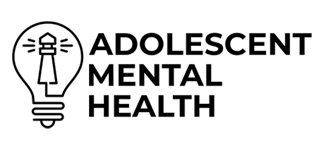Neurotherapy Side Effects: What You Need to Know
Neurotherapy is a non-invasive method that uses brainwave feedback to improve brain function. While it offers potential benefits for mental health conditions, patients may experience side effects.
Understanding these effects helps you make informed decisions before beginning neurofeedback therapy.

What Is Neurofeedback Therapy?
Neurofeedback therapy focuses on brainwave activity. It trains the brain to improve specific brain functions. The process involves monitoring brain wave patterns and providing real-time feedback through a computer screen.
Neurofeedback training is a form of operant conditioning. It rewards the brain for achieving healthier patterns of brain activity.
How Neurofeedback Works
Neurofeedback treatments use a computer screen to display brainwave activity. During neurofeedback sessions, sensors are placed on specific locations of the scalp. These sensors measure brain waves, such as alpha waves, beta waves, theta waves, gamma waves, and delta waves.
Patients may engage with activities like a computer game, which respond to brainwave patterns. This feedback helps the brain learn to function better. Neurofeedback safe practices ensure minimal risks.
Common Side Effects of Neurofeedback
While neurofeedback is generally safe, side effects may occur. Most side effects are typically transient, meaning they disappear shortly after the therapy session ends. Below are the most common adverse effects:
Fatigue
Many patients feel tired after neurofeedback training. Brain training can exhaust the brain, especially during initial training sessions.Head Pressure
Some individuals report mild head pressure during or after a neurofeedback session. This feeling may occur when brainwave activity changes.Brain Fog
Brain fog is another common symptom. Patients may struggle with mental fatigue or difficulty focusing immediately after treatment.Anxiety
Some patients experience anxiety, especially when the brain reacts differently to the training.Low Energy
Low energy can occur as the brain adjusts to new brain wave patterns. This side effect usually decreases over time.Sleep Disruptions
Neurofeedback can affect brainwave activity linked to deep sleep. Changes in slower brain waves, like theta waves and delta waves, may temporarily interfere with sleep.Muscle Tension
Mild muscle tension may occur during neurofeedback sessions as patients concentrate on feedback provided.Headaches
Headaches may result from brainwave changes, though this effect is rare.
Adverse Effects: Are They Serious?
Adverse effects of neurofeedback therapy are generally mild. Most patients do not experience severe symptoms.
However, individuals with neurological conditions, brain injury, or brain damage should consult an experienced practitioner before beginning neurofeedback therapy.
Why Does the Brain React Differently?
The brain reacts differently based on the patient’s medical history and brain function. Neurofeedback sessions target specific areas of brain activity to reduce hyperactivity, improve focus, and enhance cognitive function.
However, some individuals may experience slower frequencies or higher frequencies in brainwave activity, leading to temporary discomfort.

Neurofeedback for Mental Health
Neurofeedback therapy is widely used for mental health conditions. Patients with anxiety, brain fog, or traumatic brain injury often benefit from neurofeedback treatments. By training the brain to adopt healthier patterns, neurofeedback can improve symptoms of mental health conditions.
Is Neurofeedback Safe for Everyone?
Neurofeedback safe protocols are followed in clinical settings to ensure safety. An expert practitioner will assess your brain mapping results and medical history before treatment.
Potential Benefits of Neurofeedback
Despite potential side effects, neurofeedback offers benefits such as:
Reduced anxiety
Improved focus and cognitive function
Relief from symptoms of brain damage or brain injury
Enhanced sleep quality
Patients undergoing neurofeedback training often feel confident in the process when guided by an experienced practitioner.
Addressing Common Concerns
Does Neurofeedback Cause Brain Damage?
Neurofeedback does not cause brain damage. Instead, it trains the brain to optimize brain functions. Brainwave activity is monitored safely throughout the entire process.
How Long Do Side Effects Last?
Side effects like fatigue or brain fog are typically transient. Most patients recover shortly after a neurofeedback session.
How Brainwave Patterns Influence Side Effects
Neurofeedback focuses on brainwave patterns like:
Beta Waves: Linked to alertness and focus
Alpha Waves: Associated with calm and relaxation
Theta Waves: Connected to deep relaxation
Gamma Waves: Related to cognitive function
Delta Waves: Important for deep sleep
Brain mapping identifies irregularities in these brain waves, helping practitioners target areas for improvement. Side effects occur as the brain adjusts to healthier brainwave patterns.
How to Minimize Neurofeedback Side Effects
Work with an Expert Practitioner: Choose a qualified and experienced practitioner.
Start Slowly: Gradually increase neurofeedback session duration.
Monitor Symptoms: Track any adverse side effects and inform your practitioner.
Stay Hydrated: Dehydration can worsen fatigue or headaches.
Eat Whole Grains: Whole grains support brain function and energy levels.
Who Should Avoid Neurofeedback?
Patients with severe neurological conditions or unhealed brain injuries should consult a doctor before treatment. Neurofeedback treatments are safe in most cases but may need adjustments for specific conditions.

Conclusion
Neurotherapy side effects are generally mild and short-lived. Side effects like fatigue, brain fog, and head pressure occur as the brain adapts to new brainwave patterns. Neurofeedback therapy offers significant benefits for mental health and cognitive function, making it a promising treatment for many patients. Work with an expert practitioner to ensure safe and effective neurofeedback training.
By understanding side effects and potential benefits, patients can feel confident beginning neurofeedback therapy. With proper guidance, the therapy supports improved brain functions, mental health, and overall well-being. Visit SAMHSA or Contact Us Today for more information.










